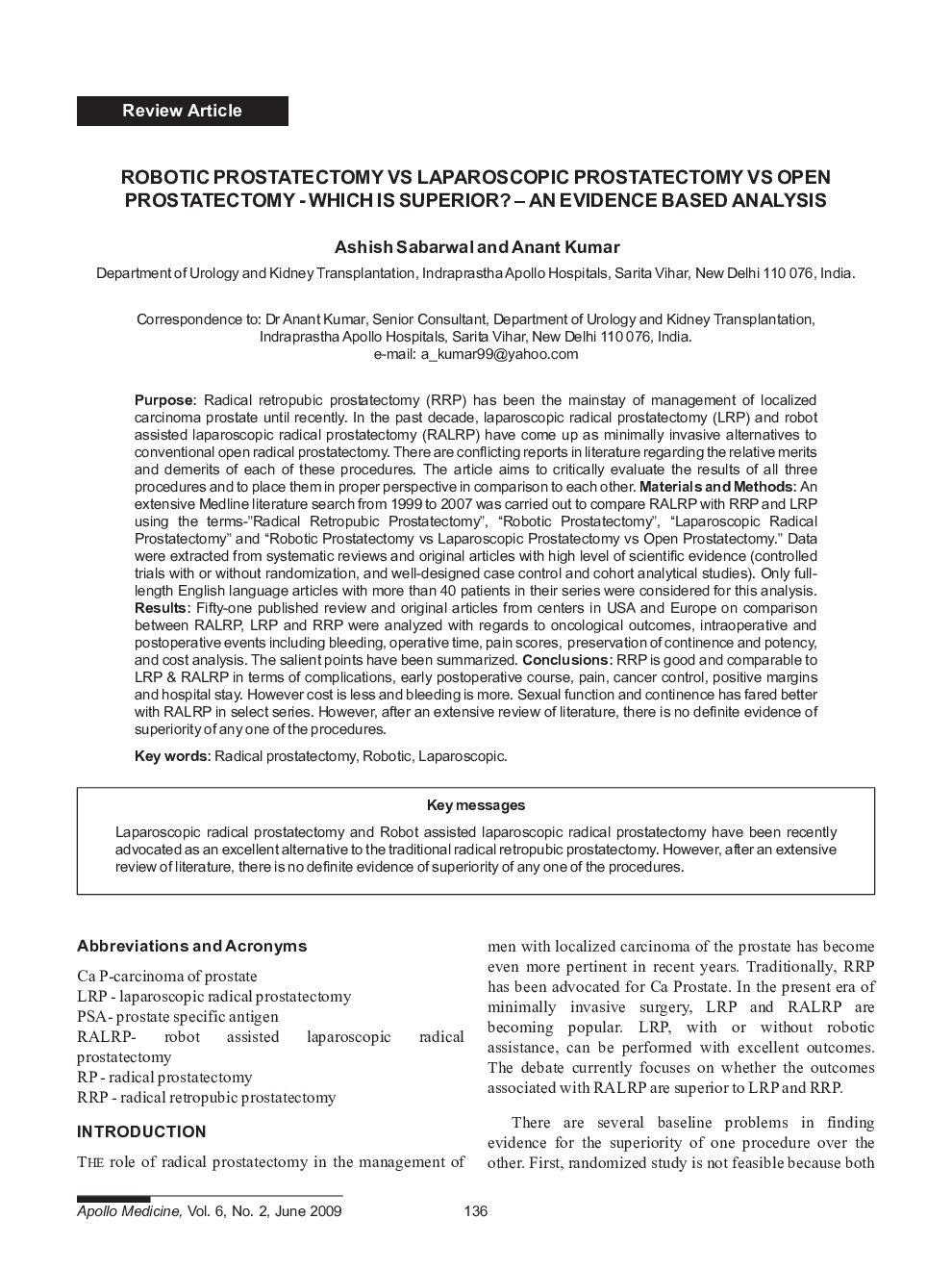| Article ID | Journal | Published Year | Pages | File Type |
|---|---|---|---|---|
| 3235422 | Apollo Medicine | 2009 | 9 Pages |
PurposeRadical retropubic prostatectomy (RRP) has been the mainstay of management of localized carcinoma prostate until recently. In the past decade, laparoscopic radical prostatectomy (LRP) and robot assisted laparoscopic radical prostatectomy (RALRP) have come up as minimally invasive alternatives to conventional open radical prostatectomy. There are conflicting reports in literature regarding the relative merits and demerits of each of these procedures. The article aims to critically evaluate the results of all three procedures and to place them in proper perspective in comparison to each other.Materials and MethodsAn extensive Medline literature search from 1999 to 2007 was carried out to compare RALRP with RRP and LRP using the terms-“Radical Retropubic Prostatectomy”, “Robotic Prostatectomy”, “Laparoscopic Radical Prostatectomy” and “Robotic Prostatectomy vs Laparoscopic Prostatectomy vs Open Prostatectomy.” Data were extracted from systematic reviews and original articles with high level of scientific evidence (controlled trials with or without randomization, and well-designed case control and cohort analytical studies). Only fulllength English language articles with more than 40 patients in their series were considered for this analysis.ResultsFifty-one published review and original articles from centers in USA and Europe on comparison between RALRP, LRP and RRP were analyzed with regards to oncological outcomes, intraoperative and postoperative events including bleeding, operative time, pain scores, preservation of continence and potency, and cost analysis. The salient points have been summarized.ConclusionsRRP is good and comparable to LRP & RALRP in terms of complications, early postoperative course, pain, cancer control, positive margins and hospital stay. However cost is less and bleeding is more. Sexual function and continence has fared better with RALRP in select series. However, after an extensive review of literature, there is no definite evidence of superiority of any one of the procedures.
